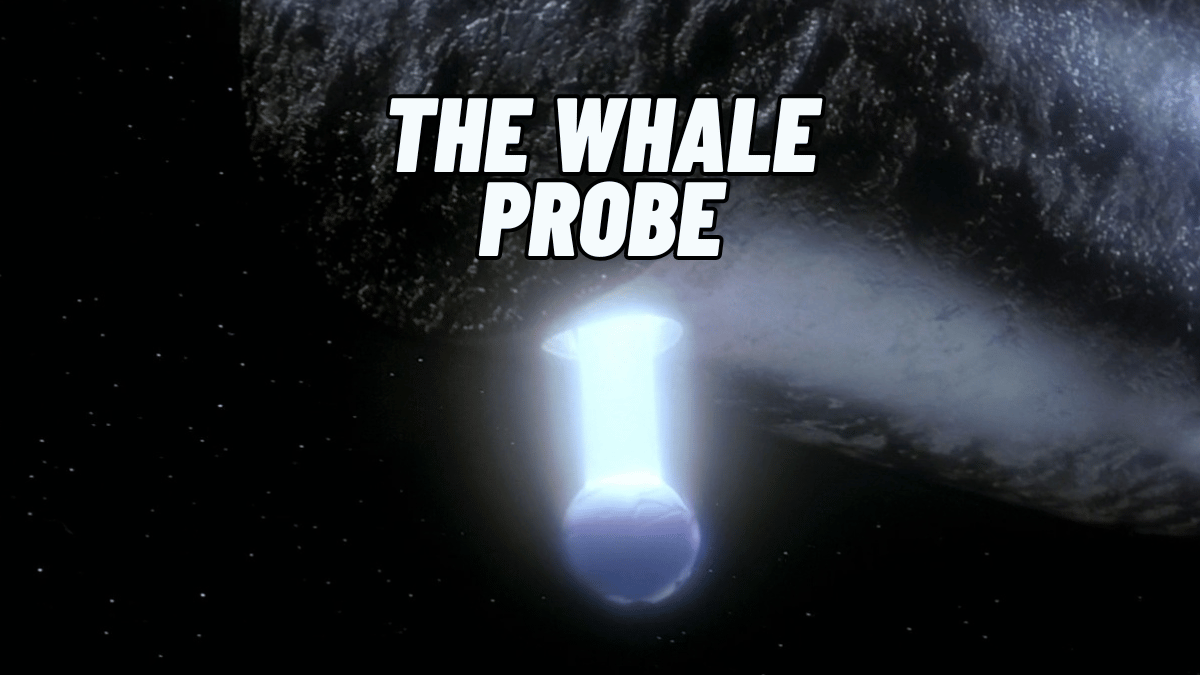Introduction
In Star Trek IV: The Voyage Home, Starfleet faces an unprecedented threat from a mysterious alien probe. This massive device enters Federation space and broadcasts a signal aimed at Earth’s oceans. Its purpose is not invasion but contact—with extinct humpback whales. This post examines the probe’s capabilities, its strategic impact on Starfleet, and comparisons to real-world tactics. It also explores potential countermeasures and broader lessons for Federation security and first-contact protocols.
The Whale Probe’s Capabilities
The Whale Probe appears as a vast cylinder with a small, detachable sphere that serves as its transmitter. The probe emits a call that mimics humpback whale songs. Its transmission disables nearby energy-based technology, leaving starships and planetary systems powerless. Hovering above Earth, it directs its signal into the oceans, causing effects that range from shutting down power grids to altering environmental conditions. Though not designed for attack, the probe’s energy output leads to widespread disruption.
Its method of communication is unique. By broadcasting a whale-like call, the probe seeks to contact its intended recipients—humpback whales. However, the signal creates a blackout zone. In a manner similar to an electromagnetic pulse, the transmission incapacitates advanced technology over a broad area. The incident demonstrates the risks of an alien device operating on principles that surpass human engineering.
Strategic Implications
The probe’s arrival left Starfleet in disarray. As it approached Earth, every vessel in its path lost power. Starfleet ships—and even some Klingon vessels—were disabled merely by proximity. Traditional defense tactics proved ineffective. Instead of engaging in battle, Starfleet had to reassess its approach to an enemy that posed no conventional threat.
The probe did not engage in combat. It fired no weapons and made no direct threats. Its actions were driven by a singular purpose: to establish communication through whale song. Starfleet was forced to focus on understanding rather than fighting. Leadership quickly recognized that the situation required creative problem solving rather than military might.
Real-World Tactical Comparisons
The incident draws parallels with modern tactics in electromagnetic warfare. Today’s military employs devices that disable electronics with focused energy. The probe’s effect mirrors an extreme version of this tactic, rendering entire fleets inactive with one powerful signal. Just as an electromagnetic pulse can knock out critical systems, the probe’s transmission created a persistent zone of interference.
Naval strategies also offer insight. A modern warship hit by an unexpected electronic disruption would be left adrift. Starfleet’s experience with the Whale Probe resembles a scenario where conventional methods fail against a non-traditional threat. Instead of engaging with weapons, the situation demanded resilience and adaptation.
Potential Starfleet Defensive Strategies
The Whale Probe incident exposed critical vulnerabilities in Starfleet’s defenses. In response, several countermeasures can be envisioned:
- Hardened Systems: Starfleet could develop shielding and backup power systems to protect against energy-draining signals. Reinforcing starships against electromagnetic disturbances may help maintain operations during extreme events.
- Autonomous Backups: Developing analog systems or unmanned drones with rugged controls might provide alternative solutions when electronic systems fail. Such backups could allow essential functions to continue despite a hostile signal.
- Long-Range Containment: With direct engagement proving ineffective, remote strategies deserve consideration. Methods like long-range signal jamming or deploying countermeasures from a safe distance might help neutralize similar threats.
- Enhanced First-Contact Protocols: The probe highlights the need for advanced xenolinguistic capabilities. Creating a repository of alien signals, including those from endangered species, would help Starfleet decode unfamiliar communications in future encounters.
- Intelligence Sharing: Collaboration with other spacefaring powers could foster a collective defense. Sharing information on unusual phenomena may lead to early-warning systems and coordinated responses.
Broader Implications for Federation Security
The Whale Probe taught the Federation that not all threats come in the form of direct attack. Its presence forced Starfleet to rethink conventional tactics and embrace science, communication, and collaboration. The incident influenced first-contact protocols and led officials to consider that some messages may not be intended for humanity.
In the aftermath, Starfleet likely reformed its security measures and placed greater emphasis on understanding alien technology. The experience served as a reminder that preserving biodiversity and remaining open to unconventional communication methods are vital in an unpredictable galaxy.
Conclusion
The Whale Probe incident remains a pivotal moment in Starfleet history. Technologically, it showcased capabilities that exceeded Federation norms. Strategically, it exposed the limits of conventional defense and the need for creative solutions. By forcing Starfleet to listen before fighting, the probe left a lasting impact on how the Federation prepares for the unknown.

